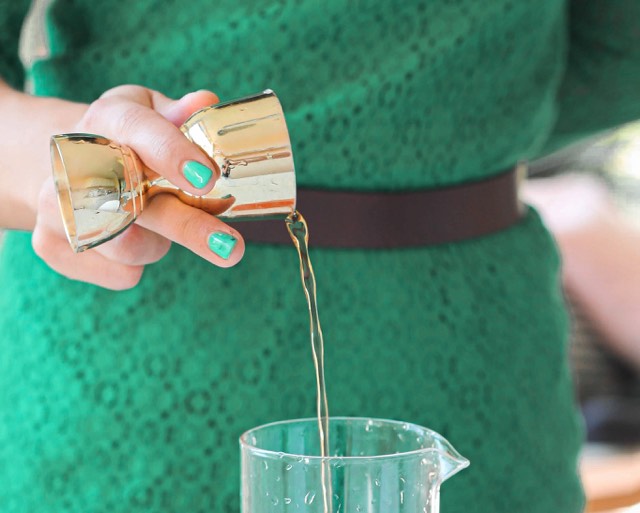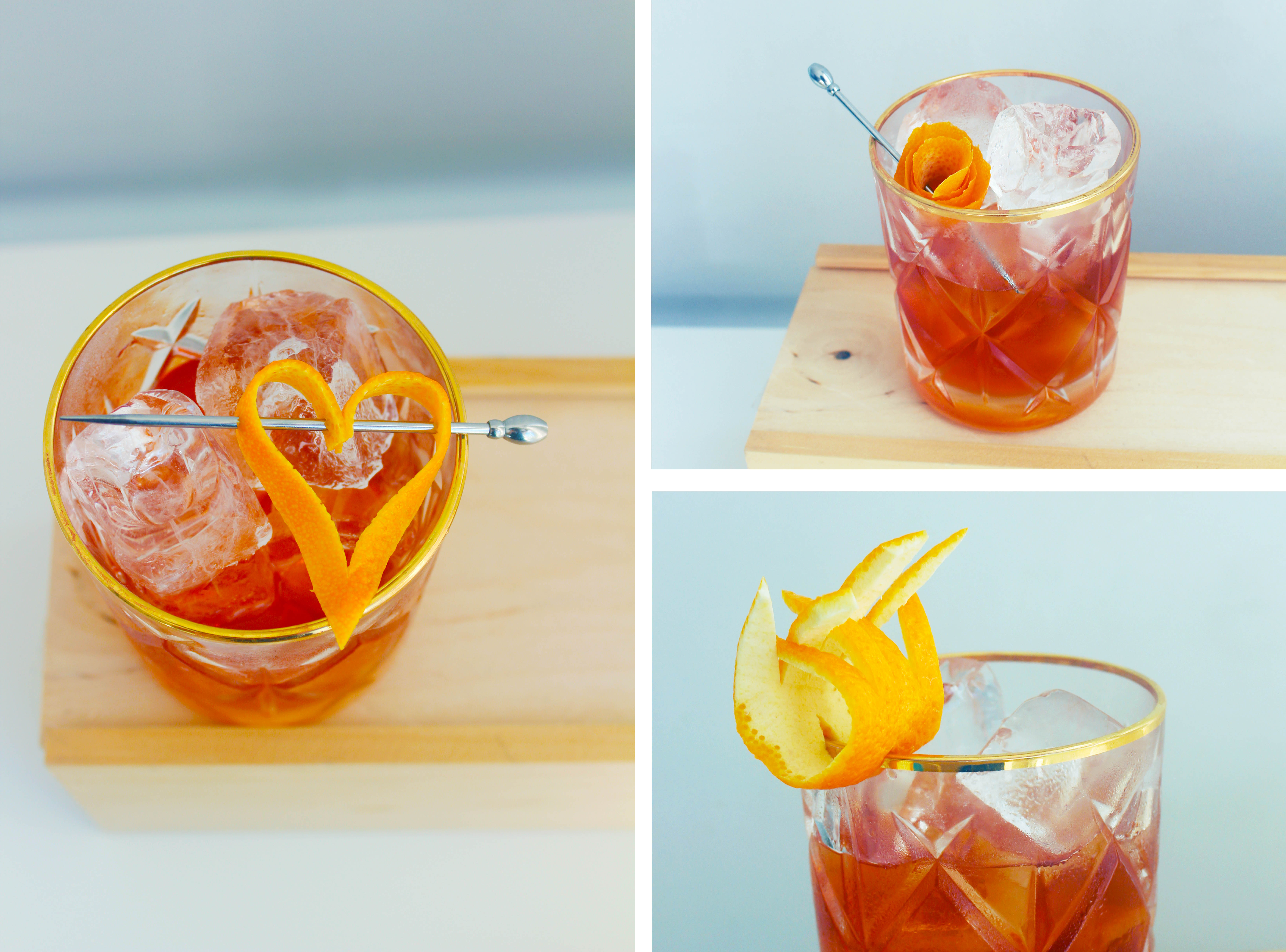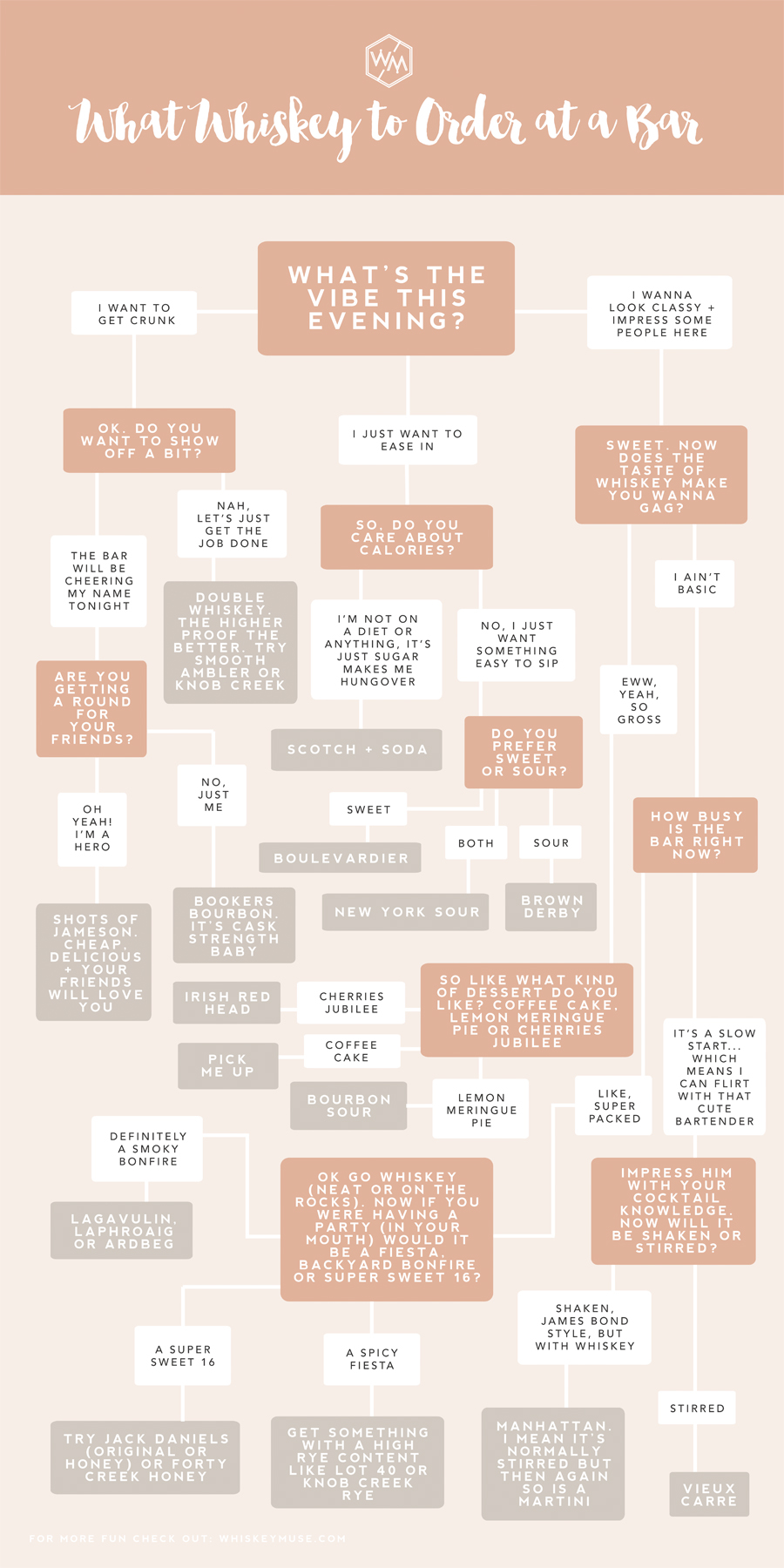
This is the first instalment of the “Whiskey Tasting 101” Series where you learn how to become a better taster and develop a better vocabulary around tasting, so you can sound like an expert (even if you’re not).
In this article we will explore phrases that you’ve probably said (or at least said to yourself) when trying a whisky.
With each phrase we will explore:
- What you’re actually trying to describe
- Why this sensation/description happens
- Alternative phrases you can use to sound smarter
KEY TERMS IN THIS ARTICLE
Adsorption: When a solid substance adheres gas or liquid molecules to its surface
Alcohol by Volume (ABV): a measure of how much alcohol (ethanol) is contained in a volume of an alcoholic beverage
Congeners: All of the other substances found in whisk(e)y other than ethanol
Esters: A type of organic compound that produces fruity notes in a whiskey. Esters are typically formed during fermentation but will also form during maturation. type of congener
Nociceptors: The pain receptors in our mouths that alert us of harmful mechanical, chemical or thermal stimuli
Single Pot Still Whiskey: A category of whiskey made in Ireland that is composed of a mix of malted and unmalted barley distilled in a pot still
Viscosity: the measure of a fluid’s resistance to flow
Volatility: how quickly a substance evaporates at normal temperatures
PHRASE ONE
“This Smells Strong”
WHAT IT MEANS
When a whisky smells strong, it can be due to one or more things and we’re going to dive into four of them:
1) The whisky has a lot of “top notes” or “head notes” to it
2) The whisky has a high ABV
3) The whisky is matured is brand new barrels
4) The whisky is young
WHY IT HAPPENS
Whisky is made up of ethanol as well as a number of other substances that possess different levels of volatility. Within whisky there are substances that have higher volatility than ethanol and therefore evaporate first, giving us the first impression of that whisky.
A whisky can contain more or less of these highly volatile top notes (a term that is often used in perfuming). If you smell strong top notes on the nose that are enjoyable and fruity, the scents are likely coming from esters. The amount and type of esters are dependent on a number of factors during the whiskey making process including (A) fermentation duration; (B) distillation techniques; and (C) interaction with barrels during maturation. Alternatively, if you smell harsh notes that are un-enjoyable and burn your nose, they could be due to (D) the whiskey’s ABV; or (E) the whiskey being young.
ELEMENTS THAT AFFECT A WHISKEY’S AROMA
Fermentation Duration: During fermentation, the amount of esters formed can be influenced (to be more or less) by the type of yeast used, how much yeast is used, and the increase of the fermentation temperature.
Distillation Techniques: During distillation, the distillate is divided into three sections based on boiling points known as the heads, hearts and tails. However, there is no exact formula for when these sectional cuts are made – it’s to the discretion of the master distiller. Therefore, a distillate that is composed of more of the “heads” alcohols (i.e. esters) will have more volatile compounds than a distillate that has a smaller hearts cut.
Maturation Duration: When whisky is aged, it interacts with the charred oak and pulls out compounds that smell good (things like sweet, vanilla, toffee, caramel notes) and are comprised of compounds that are more volatile than ethanol and therefore you will smell them first. Similarly, additional esters will form during maturation.
The Whisky’s ABV: A whisky with a higher ABV has a higher alcohol concentration and thus more volatile compounds to evaporate more rapidly.
The Whisky is Young: Alternatively, a younger whisky hasn’t had as much time for the alcohol-smell to be adsorbed by the barrel and the other friendly smells to be pulled from the barrel. Hence, you will get a lot more of that harsh alcohol note on the nose. We will be going into these things deeper with the next two sections.
ALTERNATIVE PHRASES TO USE
If the whisky smells strong but enjoyable and you’re not quite ready to verbalize specific flavor notes, instead of saying “this smells strong” you can say:
“This whisky is very aromatic” – Aromatic just means that is has a very pleasant + distinctive smell
“This whisky is very congener rich” – Esters as well as the other chemical compounds found in the heads of a distillate fall under the “congener” umbrella.
If the whisky smells strong in a harsh way to you, but you don’t want to offend people you can say:
“This whisky is quite pungent” – Pungent just means that the whisky has a sharply strong smell to it
“This whisky has a very pronounced aroma” – “Pronounced” is a term often used in WSET trainings to describe when a wine has a very intense aroma. It has a neutral connotation (things can be pronounced and smell amazing or they can be pronounced and smell corked).
PHRASE TWO:
“This Tastes Thick”
WHAT IT MEANS
When we talk about thickness, first off, it’s not a taste, but rather a texture or mouth-feel that creates the sensation.
When a whisky feels “thick” it is because it has a higher viscosity. Think about the difference texturally between drinking a glass of water versus juice versus a smoothie. Each of these beverages has a different mouth-feel to them. Water, is relatively light and thus has a low viscosity whereas a smoothie is thicker in consistency and therefore has a higher viscosity.
WHY IT HAPPENS
Why exactly do some whiskies have a higher viscosity than others? There are countless factors at play, however, I want to focus on five in particular – some of which mirror why a whisky smells strong:
1) The number of congeners produced during fermentation
2) What type of still is used
3) Maturation duration
4) If the whisky contains malted barley in it
5) The ABV of the whisky

ELEMENTS THAT AFFECT A WHISKY’S “THICKNESS”
1) Congeners Produced During Fermentation: As I mentioned in the last section, esters, which are a type of congener, will affect the viscosity of the whisky. In fact, oils and fats are just esters composed of fatty acids and glycerol. So, the more esters, the more viscous the whisky will be.
2) Type of Still Used: Column stills will remove more of the congeners and create a purer spirit, which creates less viscosity. Pot stilled whiskies tend to leave behind many of the heavier compounds and congeners giving whiskies a richer, more oily feel.
3) Interaction with the Barrel During Maturation: Interaction with the charred barrel during maturation: in addition to esterification during fermentation, while whiskies are being matured, the ethanol interacts with the chemicals in the wood and even more esters are formed.
4) The Whiskey Contains Unmalted Barley: You may have heard of something called a Single Malt before. This type of whisky contains 100% malted barley. But if you look at other grains like corn, rye, and wheat, they are typically unmalted when used to make whisky. So what about unmalted barley? Is that a thing?
In fact it is! There is a category of whiskey called “Single Pot Still” whiskies and they are produced exclusively in Ireland. This style of whiskey must contain a certain portion of malted barley AND unmalted barley. The contribution of unmalted barley is said to contribute an oily, viscous mouth feel to the whiskey.
5) The ABV of the whisky: Often during whisky tastings, people will swirl their glass and look at the legs of the whisky. The legs are the droplets left on the inside of the glass that slowly trail back down. A whisky with a higher viscosity will typically have legs that fall more slowly.
While the ABV or alcohol by volume can affect the viscosity of a whisky, to say that “the higher the ABV, the more viscous the whisky will be” would be incorrect. In fact, many studies have found that at approximately 40-50% ABV the alcohols reach a maximum viscosity after which higher ABV’s will have declining viscosity levels (see graph here).
Therefore, looking at the “legs” of wine may help to determine ABV because most wines are in the 7-15% ABV range, this may not help to determine the ABV of the whisky.
ALTERNATIVE PHRASES TO USE
Some
alternative phrases you can use instead of “this whisky is thick” are:
“This whisky has a high viscosity” –
which is really just a blanket term for anything you consider oily or thick.
“This whiskey is chewy” – If the
whisky has a thicker texture and a lot of sweet / candy notes to it (for
example vanilla, caramel, toffee, cocoa) those things that are derived from oak
maturation, many people will describe the whiskey as “chewy.” Because bourbon
is required by law to be aged in brand new charred oak, you will find that
people will describe a Bourbon’s mouth feel as chewy when it has a higher
viscosity.
“This whisky is creamy” – which just means that it resembles the consistency of cream. I have found that a lot of Single Pot Still whiskies, again, which contain that unmalted barley in it, are described as “creamy.”
PHRASE THREE:
“This Burns My Mouth”
WHAT IT MEANS
In general this could mean one of three main things:
1) You haven’t drank enough hard alcohol to be used to the intensity
2) The alcohol has a high ABV (maybe it’s cask strength, or higher than 40%)
3) The whisky is young and hasn’t had time for the whisky to become balanced
WHY IT HAPPENS
1 & 2) You Haven’t Drank Enough Whisky or The Alcohol Has a High ABV: As you know, we have taste receptors in the taste buds in our mouths that allow us to experience sweet, salty, sour, bitter and umami things. In addition to these taste receptors, we also have pain receptors (known as nociceptors) that alert our mouth of harmful mechanical, chemical or thermal stimuli. Think about when you sip a cup of tea and it burns your mouth. This is your mouth reacting to thermal stimuli and telling you, damn girl, that tea is hot. A similar sensation happens with whiskey (or any distilled alcohol) as it is a chemical stimuli.
Typically
our pain receptors will activate at about 41.7 degrees Celsius (or 107 degrees
F) but alcohol tricks the receptors and lowers that activation point to 33.9
degrees (93 degrees F). Because our body temperature is 98.6 degrees F (37
degrees C) suddenly our internal temperature is warmer than the threshold of
comfort for our pain receptors and it causes that burning sensation.
In other words, it’s not the alcohol that’s hot… it’s you *wink wink*
As you can imagine, if the whiskey has a higher ABV, it’s going to cause a more intense sensation with your stimuli.
3) The Whisky Is Young: If the whisky is young, you are more likely to taste the ‘harsh’ alcohol notes. During whisky maturation, there are a number of processes happening, one of which is called ‘adsorption.’ Adsorption (not to be confused with absorption) happens when molecules from a gas or liquid substance get stuck to a surface. When whisky is put into a barrel, especially a brand new charred barrel, many of the harsh tasting congeners get stuck to the barrel’s inner wall. While this is happening, the wood also infuses the whisky with many delicious-tasting congeners like vanillins, esters, lactones and wood spices.
ALTERNATIVE PHRASES TO USE
Some of the alternative phrases you can use instead of “this burns my mouth” are:
“This whisky is very spirit-forward”
“This whisky is quite hot on the palate”

HOW TO DEAL WITH “HOT” WHISKIES
A few ways to deal with all that hotness are:
A) Consider the first sip a “throw away sip”. Oftentimes when I’m tasting whisky I will take a small amount of the alcohol and move it around my mouth for five seconds letting it coat my tongue, teeth, the works. After swallowing the first sip, it will likely burn but this will help to acclimatize your mouth for your second sip. That second sip will be a lot more friendly on your palate and you will be able to focus on tasting notes instead of that burning sensation.
B) In addition, if you add a bit of water to your whisky dilute it, it will lower the ABV and thus make it “less burny”. Not only will this make the whisky more palatable, but water will also help to open up the whiskey and provide more flavor notes to emerge.
Okay so we have tackled three phrases in this article: “This smells strong”, “this tastes thick” and “this burns my mouth.” I would love to know in the comments below which alternative phrases you are going to use at your next whisky tasting event.





No Comments